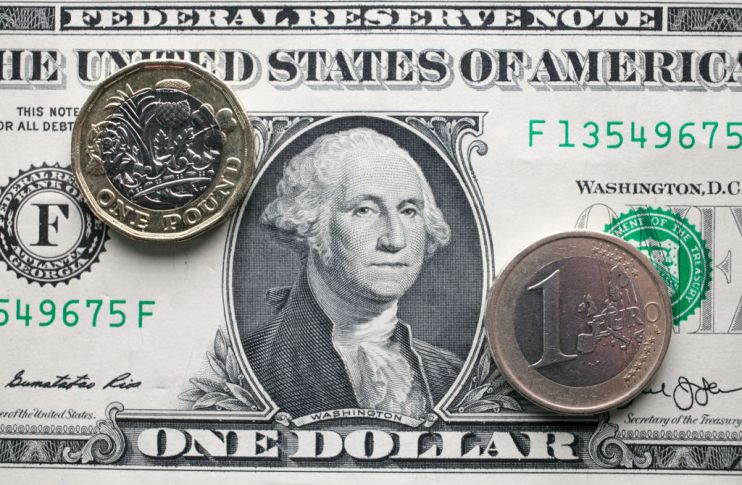Sterling surges to highest level since mid-September as US inflation falls faster than expected

The pound jumped on Tuesday afternoon after new figures showed US inflation fell faster than expected in October.
Figures from the Bureau of Labor Statistics showed the consumer price index (CPI) was flat month-on-month in October.
This meant the annual rate of inflation fell to 3.2 from 3.7 per cent last month, lower than economists’ expectations. Analysts had pencilled in a figure of 3.3 per cent.
“The index for shelter continued to rise in October, offsetting a decline in the gasoline index and resulting in the seasonally adjusted index being unchanged over the month,” the Bureau said.
Core inflation – which strips out volatile components like food and energy – climbed 0.2 per cent in October, down from a 0.3 per cent increase the month before and below market expectations.
Andrew Hunter, deputy chief US economist at Capital Economics said that this suggests “underlying inflationary pressures are fading fast”. On an annual basis core inflation increased at 4.0 per cent, its slowest pace in over two years.
Immediately after the data was published, sterling jumped 1.7 per cent to trade at $1.2486 and the dollar weakened across the board as traders bet the Federal Reserve will hold off on further interest rate hikes.
This put the pound at its strongest position against the dollar since the middle of September.
Although markets are increasingly convinced that central banks have finished raising rates, policymakers have tried to stress that a further hike this year is a real possibility.
Last week Powell said he was “not confident” that rates were high enough suggesting there was a “long way to go” in the fight to bring down inflation.
“If it becomes appropriate to tighten policy further, we will not hesitate to do so,” Powell said.
But today’s figures will make markets all the more certain that the Fed will refrain from any further hikes.
“The softer 0.2 per cent month-on-month rise in core consumer prices in October kills off any remaining chance of a December rate hike from the Fed,” Hunter said.
Lindsay James, investment strategist at Quilter Investors, agreed, suggesting the Fed’s work is “probably done”.
New figures out in the UK are expected to show that inflation fell below five per cent for the first time in two years, largely on the back of lower energy prices.
The underlying rate of inflation is likely to ease in October as well. Core inflation – which strips out volatile components such as food and energy – will fall to 5.8 per cent, according to City estimates.